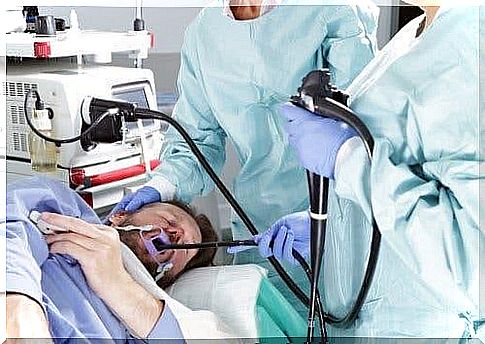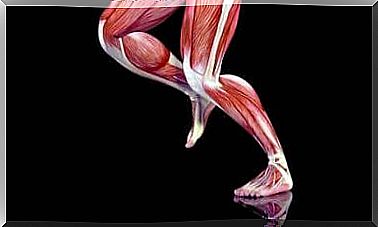Extraction Of An Esophageal Foreign Body
There are many entities that can constitute an esophageal foreign body. Depending on the nature of the entity and its location, there are several ways to do this.

Esophageal foreign body is any material lodged inside the esophagus. One third of gastrointestinal foreign body cases are esophageal foreign bodies.
Many patients who swallow foreign objects remain asymptomatic. Indeed, the foreign body manages to pass spontaneously along the digestive tract. However, this is not common. Because, serious complications such as perforations or intestinal obstructions can occur as a result of a foreign body.
In these situations, you have to act as quickly as possible. Thus, an esophageal foreign body should be suspected at the slightest clue that appears.
Causes and predispositions
In children, the most common cause of esophageal foreign body is swallowing. This is due to their habit of putting all kinds of objects into their mouths. On the other hand, in adults, the foreign body also begins with ingestion, but the causes are obviously different.
The most common cause of esophageal foreign body in adults is the result of bolus, usually meat. However, this is often due to a previous narrowing of the esophagus.
Here are some conditions that cause the esophagus to narrow:
- Distal esophageal ring, usually of congenital origin
- Formation of a tumor that reduces the diameter of the duct
- Eosinophilic esophagitis: a build-up of a type of white blood cell in reaction to allergens or acid reflux
How to deal with a foreign body in the esophagus?

The European Society of Gastrointestinal Endoscopy (ESGE) has developed a protocol for action in the event of an esophageal foreign body. According to this protocol, attention must first be paid to the general state of health of the person in order to determine the urgency of an action.
Then, it is advisable to take an x-ray in order to examine the presence, location, size, position and number of foreign bodies. Through this review:
- We suspect or know that the object is radiopaque (visible on the radiography)
- The nature of the object is unknown
Endoscopy

Endoscopy is a technique in which a probe (endoscope) is inserted inside the body. This probe has light and a camera that allow viewing of the internal compartments.
In addition, it is possible to introduce objects through the endoscope in order to manipulate the interior of the body. An example is the extraction of esophageal foreign bodies. This can be done with a flexible endoscope (most of the time) or with a rigid endoscope.
Some studies suggest that endoscopy is often curative when the foreign body is in the upper part of the esophagus.
There are also many types of endoscopies. For example, a small, rounded esophageal foreign body can be extracted with a Foley catheter. This instrument consists of a long plastic or flexible rubber tube, which has an inflatable part.
Another type of procedure is the Bougienage , which is also effective in the case of small rounded objects. This procedure involves inserting an instrument, known as the Candle , into the esophageal tube. The difference is that the goal of this technique is to push the foreign body towards the stomach.
A foreign body in the esophagus that has already passed into the stomach
If the foreign body is long and pointed, an attempt will be made to remove it endoscopically if it can be reached. Moreover, if the object is small, not sharp, and it has already passed into the duodenum, conservative treatment will be implemented. First, radiographic monitoring of the passage of the object through the digestive tract will be performed.
Then, until it is evident that the foreign body has come out of the body, the stool will be inspected. In addition, the evolution of the patient’s symptoms should be carefully observed.
Finally, it should be noted that 80% of esophageal foreign bodies that reach this point spontaneously pass to the end of the digestive tract. Nevertheless, 12% of them require a surgical intervention which is practiced safely today.









